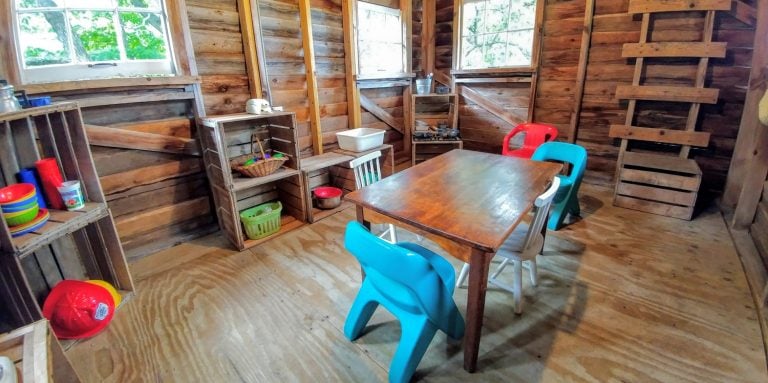What Material is a Treehouse Made of?

Treehouses are fascinating structures that can be used for recreation or as an observation deck or play area for children.
If you get serious about it, your treehouse can be your own private getaway. But you’ll need to build it right if it’s going to be anything more than a dangerous eyesore.
So, what are tree houses made of?
What Material is a Tree House Made of?
Wood, palm leaves, bamboo, rope, and glass are some of the most popular materials used to make a treehouse. The quality of the construction materials determines how long a treehouse will last, so no compromises should be made in this area.
Pressure-treated wood, T 1-11 siding, and perforated or asphalt shingle roofing are common materials used in treehouses.
These components make the tree houses affordable for a wider range of individuals.
T1-11 is durable, cost-effective, and stain-resistant.
It’s much simpler to stain before attaching the sheets, and it looks great with the rakes, corners, and fasciae finished with trim.
Perforated roofing materials are available in a variety of colors, and sheet metal is also an alternative.
Like oak, hickory, and maple, hardwood trees are most commonly used for treehouse construction.
You should always inspect the tree for visible damage to ensure that it is capable of bearing weight and avoid trees with low susceptibility, which will give a weaker base.
Below, I’ve discussed the type of materials used in making different parts of a treehouse.
Materials for the Support
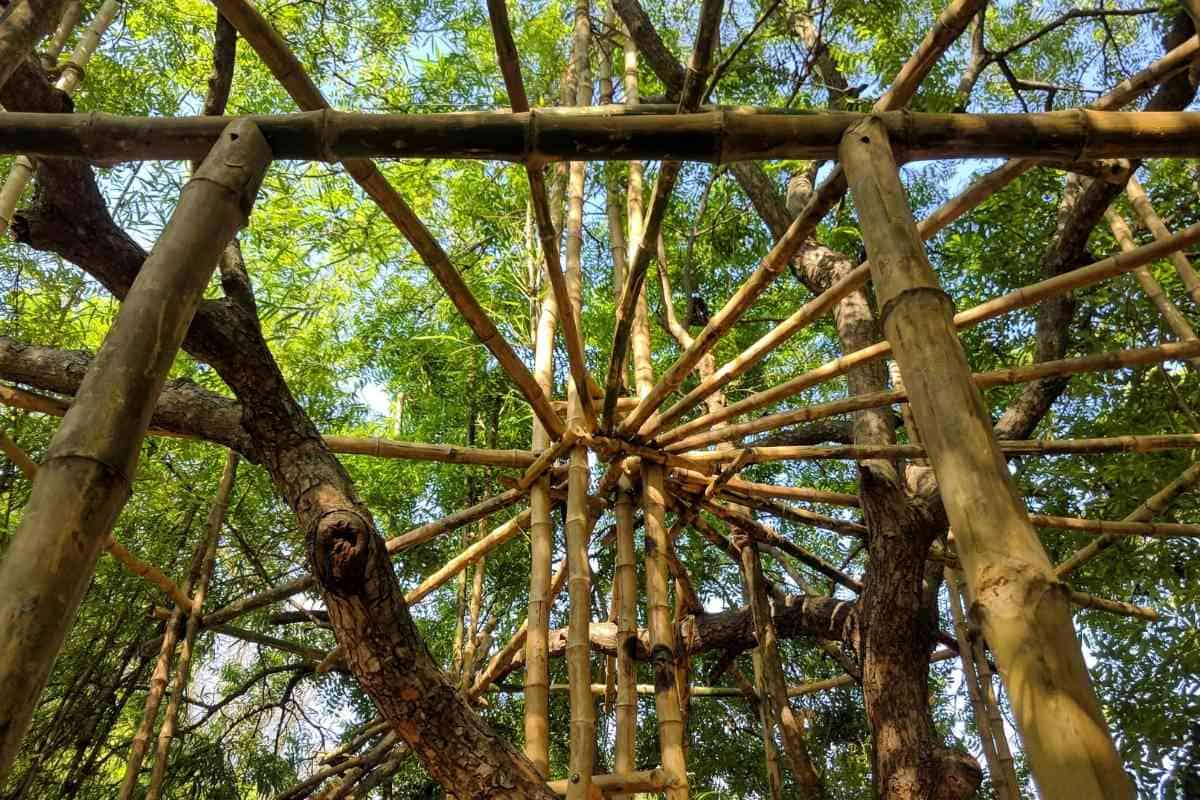
Normal wood from a home improvement store is great for building the base of the treehouse because it is pre-cut and has a consistent strength.
Self-harvested hardwood can also be utilized, although it is weaker when it is young and should be processed to expose any hidden flaws that could lead to failure.
Excessive knots and splits must be avoided, and support beams must not be bent when seen across a long edge.
Materials used for the Floor
Exterior plywood is exceptionally sturdy and suited for use in possibly moist environments for a treehouse.
It will withstand twisting pressures, resulting in a more solid floor.
A 3/4-inch width will cover joists spaced 12 inches away.
Because plywood does not permit draining or ventilation, you will have to keep water from running onto portions of the floor that aren’t roofed.
Hardwood boards are an excellent choice for flooring.
With joists spaced 12 inches away, choose a minimum of 1-inch width.
Huge, heavy sheets of plywood are more difficult to elevate into the tree, and boards will enable efficient ventilation of the treehouse via holes in the floor.
Solid wood flooring, such as maple or oak, can be used in a treehouse for a sturdy and attractive floor.
Materials for the Walls

For the walls of a tree house, you can use either exterior plywood or planks.
Ship lapping is a procedure in which planks are overlapped to enable rain to drain off without entering the wall.
Plywood can be used as a bottom layer to render the construction more solid if the framework is lightweight.
If necessary, other elements can be used to cover it.
Different materials can be employed to create aesthetic appeal because most wall covering substances are non-structural.
Woven twigs will give the treehouse a natural appearance while also allowing air to circulate.
In regions where they are accessible, shingles are preferred amongst treehouse designers.
Materials for the Roof of a Tree house
To enable rain to drain off readily, the roof must be pitched at least 30°.
A bottom layer of plywood adds stiffness to the roof, but it is rarely enough to defend the treehouse by itself.
The most prevalent materials for roofing are shingles or roofing tarpaper.
If you change the angle to at least 45°, you can thatch the roofing
If you reside in a snowy environment, a steep roof with a slope of 50° or more is suggested to allow ice to drop off.
Snowfall can be extremely heavy, causing a treehouse to topple.
Materials for the Windows of a Tree House
Plastic will not break into harmful fragments if damaged, either from within by an inhabitant or by a fallen branch outside.
It’s an option worth considering for the windows of the treehouse.
However, glass is usually clearer for windows and is extremely durable.
Unique glasses which are resistant to shatters, like those used in car windscreens, are also widely available.
If children will use the treehouse, ensure that completely openable windows are placed above the treehouse’s decked sections in the event of a fall.
What do you Need to Make a Treehouse?
To build a treehouse, you will need different materials like wood, palm leaves, bamboo, rope, and glass.
You will also need the right set of tools to construct the treehouse.
For building, the essential power tools should be leased, bought, or prepared beforehand.
Some of the important tools include:
- Saw
- Level
- Hammer
- Square
- Adjustable wrenches
- Tape measure
- Table Saw
- Pulley
- Ladder
- Electric Drill
All these tools play a crucial role in the construction of a treehouse and have their own importance in creating a structure that kids and adults will love.
What Trees are used for Tree Houses?
Almost any healthy and mature coniferous or deciduous tree can be used for supporting a treehouse.
Some particularly good species include maple, cedar, hemlock, beech, and oak.
All of these trees grow large and can withstand tough weather conditions.
How do Tree Houses Stay Up?
A treehouse stays up thanks to the platform that provides it the support system.
The platform is built close to the trunk, with enough space to accommodate the future growth of the tree.
Below, we’ve explained the process of creating a platform for a treehouse.
Begin by nailing a piece of light wood around one side of the board.
Next, before attaching the other side to the tree, make use of a level to confirm that the wood is perfectly straight.
The wood for the base should be around one foot lower than the tree house’s floor, and it should also be at least one foot taller than your head to prevent unintentional injury.
Your drill machine will be used once the piece of wood is in position.
Drill holes in the tree directly above each side. These will be used as foundation markings.
Remove the pieces of wood after every one of the holes has been drilled, and calculate the distance among each hole to establish the width and length of your platform.
You would like to drill holes in your wood slats to fit the holes you made in the tree after calculating and cutting them.
By making use of a wrench, push screws into the holes.
The structure will then be strengthened with washers.
What Makes a Good Tree House?
To make a good treehouse, selecting the right materials is essential.
Oak and maple are great choices.
These strong trees will keep your treehouse intact as long as you build the platform perfectly and use high-quality material for construction.

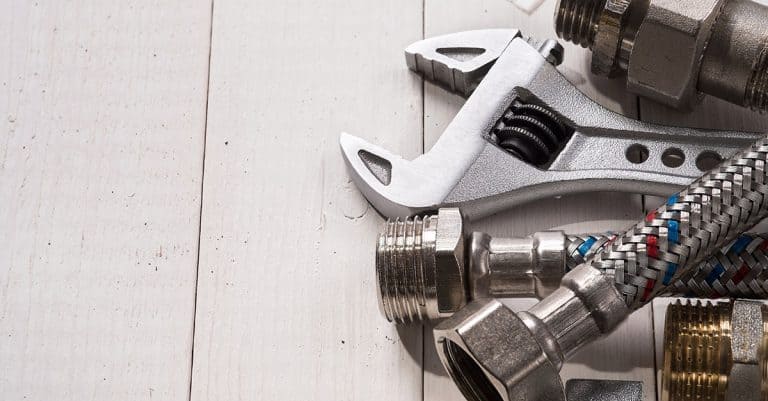
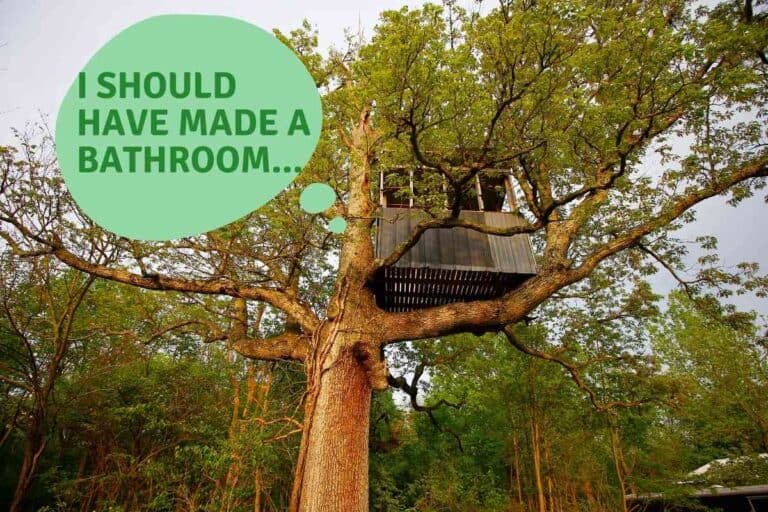
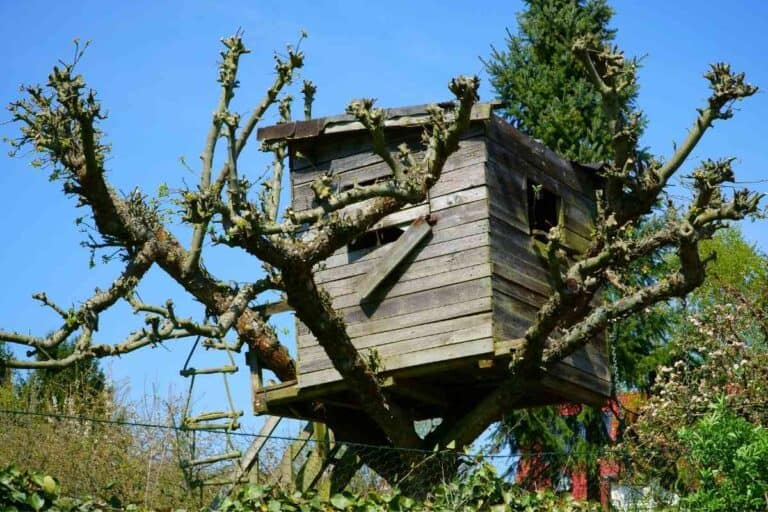

![Are Treehouses Dangerous? [How To Avoid Injuries!]](https://freedomresidence.com/wp-content/uploads/2022/05/Are-Tree-Houses-Dangerous-768x512.jpg)
